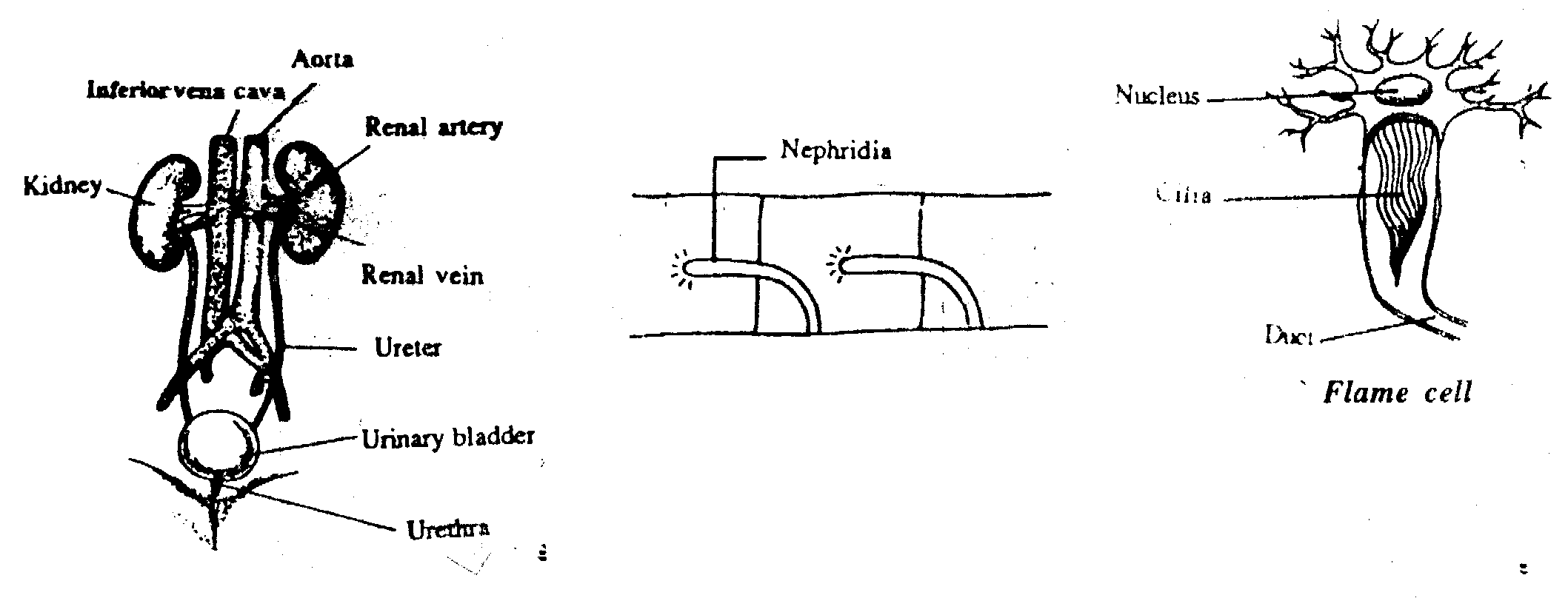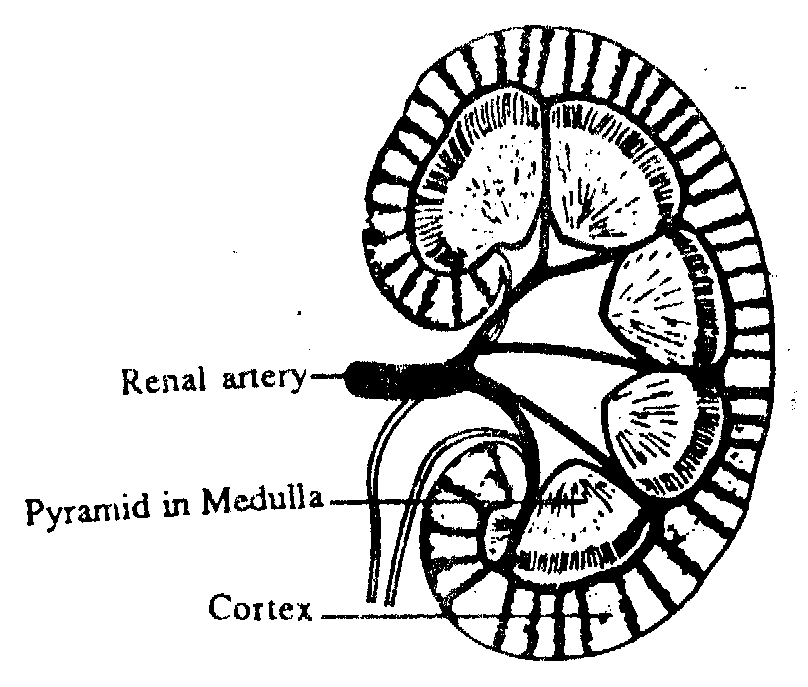|
|
|
CHAPTER # 5
EXCRETION
Excretion is the process by which wast products are removed from the body of living organisms.
SIGNIFICANCE OF EXCRETION
Number of waste products are formed during the metabolic reactions. If these waste products are accumulated in the body they cause harm to the body. For the normal functions of the body these waste products should be removed from the body.
EXCRETORY PRODUCTS
Following are important excretory products.
EXCRETION OF CO2
1. IN UNICELLULAR ORGANISMS
In unicellular organisms excretion of CO2 takes place through the body surface by the process of simple diffusion.
2. IN EARTH WORM
In earth worm excretion of CO2 takes place by the process of simple diffusion through the body surface.
3. IN INSECTS
In insects excretion of CO2 takes place through trachea.
4. IN FISHES
Excretions of CO2 take place by gills in fishes.
5. AMPHIBIANS / REPTILES / AVES AND MAMMALS
In these animals excretion of CO2 takes place through lungs.
EXCRETION IN PLANTS
Plants remove CO2 through stomata. Other waste products are stored in different parts of the plant like leaf and seeds which detached from the plant after some time.
During the day time processes of photosynthesis and respiration take place in plants. The CO2 produced by respiration is used during the process of photosynthesis. Oxygen is produced during the process of photosynthesis. During day time plants produce more O2. During night only CO2 is produced as the process of respiration takes place during night but there is no photosynthesis during night time.
EXCRETION OF NITROGENOUS WASTE AND EXCESS OF WATER AND SALTS IN ANIMALS
1. UNICELLULAR ORGANISMS
Excretion of waste products takes place through the process of simple diffusion. Excess amounts of water and salts are excreted through contractile vacuoles.
2. FLAT WORMS (TAPE WORM, LIVER FUKE)
Excretory organ of flat worms are flame cells, and tubules attached with them. The tubules are connected to the flame cell at one end while at other they collectively open into a common duct which opens outside through excretory pore.
Flame cell has structure of typical cell and contain nucleus and cytoplasm. It is rounded from the outside while its internal surface form a cavity with tuft of vilia . Flame cell appear like flicking flame of candle so it is called flame cell.
Flame cells absorb waste products and remove it through excretory pore.
3. EARTH WORM
Excretory organ of earth worm is nepheridia. Nepheridium is twisted tubule which opens at one end into the body cavity and at the other end to outside of the body. There is a pair of septal nepheridia in each segment. Nepheridia collect waste products from the body cavity and remove it from the body.

EXCRETORY SYSTEM OF MAN
Excretory system of man consist of following parts.
There is a pair of kidney in abdominal cavity, both are covered by a membrane called peritomium. Each kidney is bean shaped and dark brown in colour. Nephron is the functional unit of the kidney. There are about 1 million nephrons in each kidney.
INTERNAL STRUCTURE OF THE KIDNEY
Following regions can be seen in L-S of kidney.

1. CORTEX
It is darker region of the kidney.
2. MEDULLA
It is inner lighter portion of the kidney.
a. PYRAMIDS
These are conical structure in medulla.
b. PELVIS
It is funnel shaped part which arises from medulla and become narrow after some length then it is called ureter.
STRUCTURE AND WORKING OF NEPHRON
Nephron is a kidney unit receiving tissue fluid and modifying it into urine. Nephron consist of following parts.
WORKING OF NEPHRON
Tissue filtrate is forced out from glomerulus into the cavity of Bowman's capsule. As fluid pass along the tubules all food and other useful substances are reabsorbed from tissue fluid leaving urine, which is brought to renal pelvic through collecting duct. From renal pelvic urine is carried to urinary bladder through ureter. Urine is stored in urinary bladder for some time and then removed from the body.
KIDNEY DISORDERS
STONE FORMATION
Defect can occur in the filtration process or the function of the tubules in changing the filtrate into urine or by accumulation of stones in kidney system.
TREATMENT
|
Copyright © 2001 Epoint web center. All Rights Reserved. |